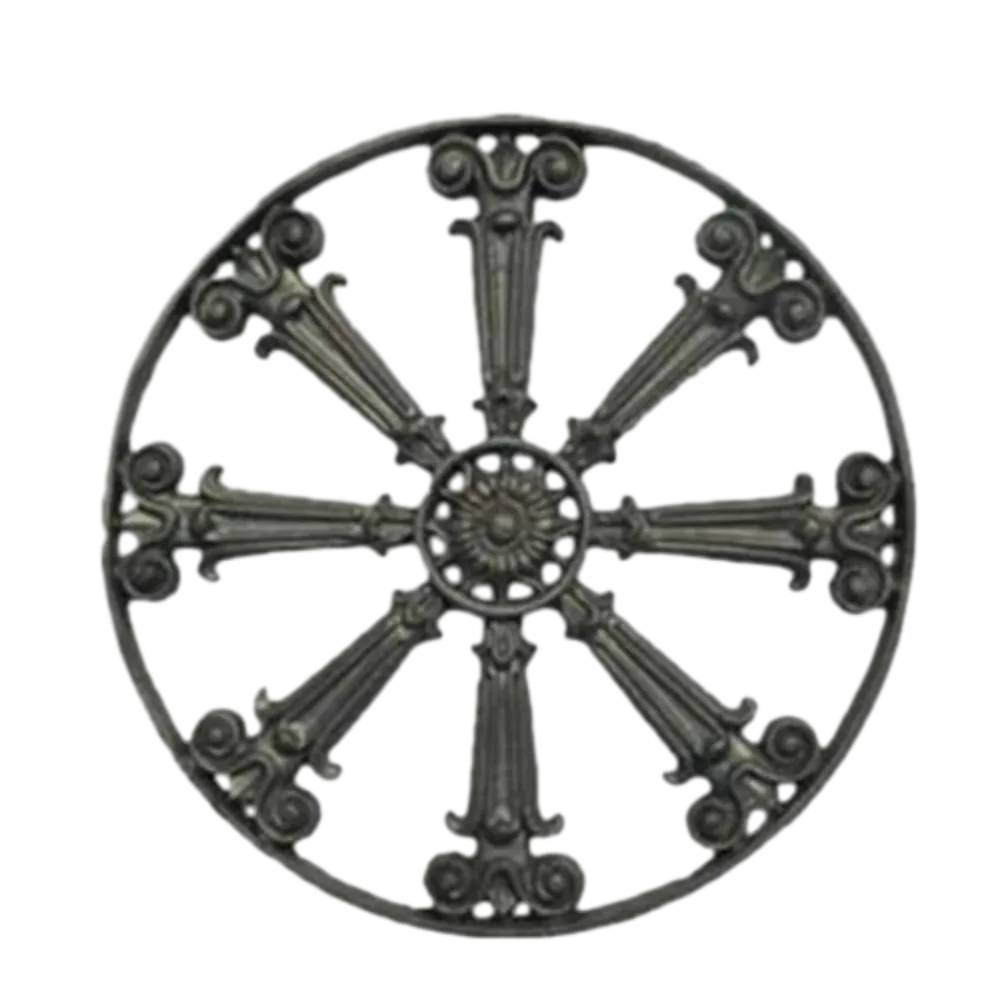Exploring the Aesthetic and Functional Benefits of Cast Iron Finials for Home Decor
The Allure of Cast Iron Finials
Cast iron finials are more than just decorative elements; they are a testament to the artistry and craftsmanship of metalworking. These ornate features, often found atop fences, gates, and rooftops, serve both aesthetic and functional purposes, showcasing an enduring blend of beauty and durability.
Originating in the early 19th century, cast iron became a popular material due to its versatility and strength. During this period, the industrial revolution brought about advancements in manufacturing, allowing for the mass production of intricate designs. Cast iron finials quickly gained popularity in architectural designs, reflecting the artistry of the era while also embodying a new wave of functionality.
Finials are often seen as the crowning touch of various structures, ranging from elegant wrought iron fences to grandiose estates. Their designs can vary widely, encompassing styles from Victorian to Gothic, and even modern interpretations. They can depict everything from floral motifs and animals to geometric patterns, allowing homeowners and architects to customize their spaces while paying homage to historical influences.
One of the most appealing aspects of cast iron finials is their enduring nature. Unlike other materials that might succumb to the elements over time, cast iron is known for its durability, making it an ideal choice for outdoor applications. When properly maintained, a cast iron finial can last for generations, weathering the harshest conditions while retaining its beauty. This longevity makes it a sustainable choice for those looking to invest in timeless elegance.
cast iron finials

Maintenance of cast iron finials is relatively straightforward. Occasional cleaning with soapy water and a soft brush can help remove dirt and debris, while a periodic inspection for rust is recommended. If rust is discovered, it can simply be sanded down and repainted with a suitable metal paint to restore its original luster. Following these steps can ensure that cast iron finials remain a captivating feature that enhances the property's character.
In addition to their aesthetic appeal, cast iron finials also serve symbolic purposes. They can represent protection, strength, and elegance in many cultures. For instance, the use of animal figures—like lions or eagles—atop finials can signify guardianship, while floral designs may symbolize beauty and life. This layer of symbolism adds depth to their beauty, turning simple decorative pieces into meaningful statements about a home or property.
In contemporary design, the use of cast iron finials is experiencing a revival. Designers are embracing the charm of this classic material, integrating it into modern architecture while celebrating its historical roots. As urban spaces evolve and the desire for unique, handcrafted elements increases, cast iron finials are reemerging as sought-after features.
Ultimately, cast iron finials exemplify the intersection of beauty, functionality, and history. They not only enhance the visual appeal of structures but also embody the craftsmanship of an earlier era. Whether gracing a historic estate or a contemporary home, these exquisite pieces continue to inspire and captivate, reminding us of the timeless allure of quality design and the stories that structure can tell.
-
Wrought Iron Components: Timeless Elegance and Structural StrengthNewsJul.28,2025
-
Window Hardware Essentials: Rollers, Handles, and Locking SolutionsNewsJul.28,2025
-
Small Agricultural Processing Machines: Corn Threshers, Cassava Chippers, Grain Peelers & Chaff CuttersNewsJul.28,2025
-
Sliding Rollers: Smooth, Silent, and Built to LastNewsJul.28,2025
-
Cast Iron Stoves: Timeless Heating with Modern EfficiencyNewsJul.28,2025
-
Cast Iron Pipe and Fitting: Durable, Fire-Resistant Solutions for Plumbing and DrainageNewsJul.28,2025
-
 Wrought Iron Components: Timeless Elegance and Structural StrengthJul-28-2025Wrought Iron Components: Timeless Elegance and Structural Strength
Wrought Iron Components: Timeless Elegance and Structural StrengthJul-28-2025Wrought Iron Components: Timeless Elegance and Structural Strength -
 Window Hardware Essentials: Rollers, Handles, and Locking SolutionsJul-28-2025Window Hardware Essentials: Rollers, Handles, and Locking Solutions
Window Hardware Essentials: Rollers, Handles, and Locking SolutionsJul-28-2025Window Hardware Essentials: Rollers, Handles, and Locking Solutions -
 Small Agricultural Processing Machines: Corn Threshers, Cassava Chippers, Grain Peelers & Chaff CuttersJul-28-2025Small Agricultural Processing Machines: Corn Threshers, Cassava Chippers, Grain Peelers & Chaff Cutters
Small Agricultural Processing Machines: Corn Threshers, Cassava Chippers, Grain Peelers & Chaff CuttersJul-28-2025Small Agricultural Processing Machines: Corn Threshers, Cassava Chippers, Grain Peelers & Chaff Cutters












